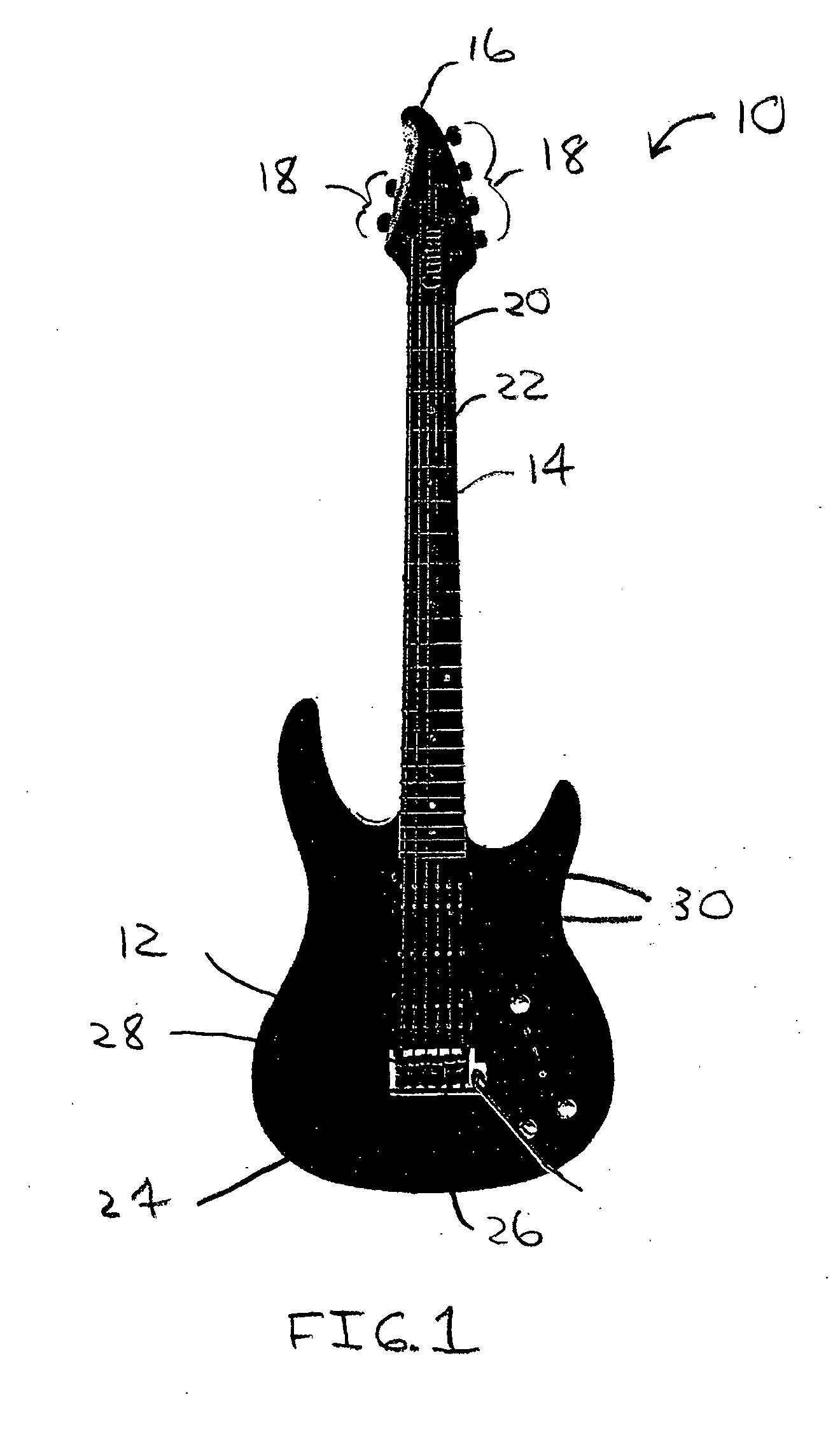Stringed musical instrument device
a stringed instrument and instrument technology, applied in the field of strings of musical instruments, can solve the problems of inability to use instruments with personal computers, degradation and distortion of electric signals, and disadvantages of traditional stringed instruments which transmit analog signals, and achieve the effect of accurately connecting to a computer, accurately representing, and instantly and accurately recognizing by the computer
- Summary
- Abstract
- Description
- Claims
- Application Information
AI Technical Summary
Benefits of technology
Problems solved by technology
Method used
Image
Examples
Embodiment Construction
[0021] With reference to FIG. 1., an electric guitar embodying the present invention is indicated generally by the reference number 10. Although the present invention will be described with respect to a guitar, it should be understood that the present invention is applicable to other stringed instruments including, but not limited to, violins, violas, basses and mandolins.
[0022] The electric guitar 10 comprises a body 12 connected to a neck 14. The neck 14 is preferably made of wood or a related material which is suitable to withstand continual string pull without warping or twisting. The neck 14 has a headstock 16 which supports tuning machines 18. The tuning machines 18 hold strings 20. The strings 20 are strung at tension and extend from a fixed point at the neck 14 to a lower string contact. The neck 14 is mated with a fretboard 22 which is preferably made of a hard substance such as rosewood, ebony, or a reinforced polymer that should be strong enough and stable enough to hold...
PUM
 Login to View More
Login to View More Abstract
Description
Claims
Application Information
 Login to View More
Login to View More - R&D
- Intellectual Property
- Life Sciences
- Materials
- Tech Scout
- Unparalleled Data Quality
- Higher Quality Content
- 60% Fewer Hallucinations
Browse by: Latest US Patents, China's latest patents, Technical Efficacy Thesaurus, Application Domain, Technology Topic, Popular Technical Reports.
© 2025 PatSnap. All rights reserved.Legal|Privacy policy|Modern Slavery Act Transparency Statement|Sitemap|About US| Contact US: help@patsnap.com



